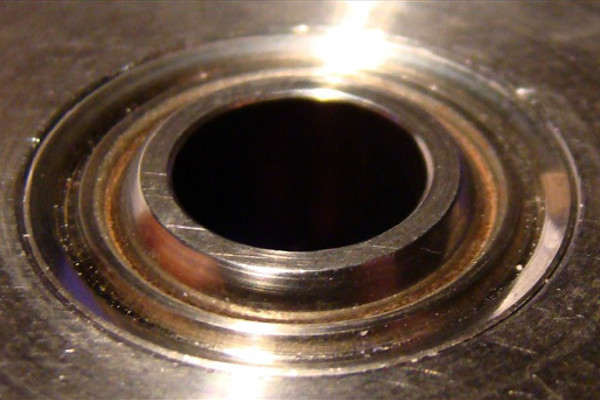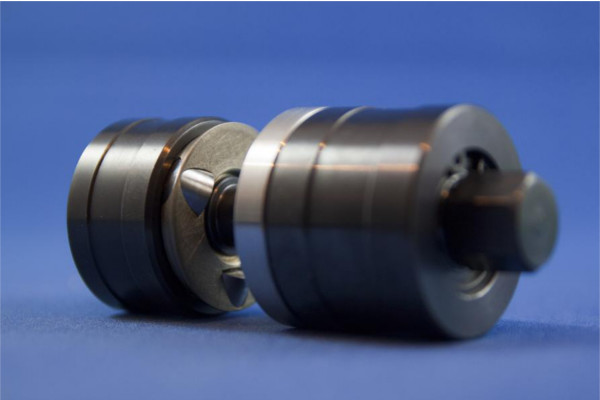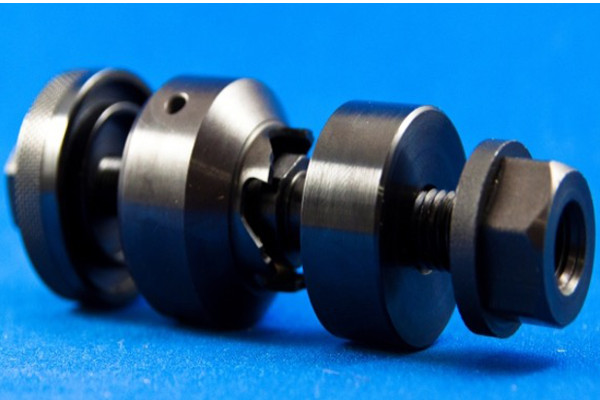Welcome to Sino Bearings web
24x7 HOTLINE:+86-28-81454188

 TECHNOLOGY
TECHNOLOGYIn order to exploit the full potential that bearings have to offer, they must be correctly installed by using the appropriate tools. The repercussions of a poorly mounted bearing can be catastrophic, says Martin Wakelin, Sales Director at Carter Manufacturing Limited.
The correct installation of bearings can save time and dramatically increase the life of bearings, as well as maximising the availability of critical plant and machinery by avoiding costly breakdowns. The key here is to ensure that the appropriate tools for the mounting of the bearings are on hand for the engineer at the installation/assembly stage. Using the correct tools ensures that bearings are mounted easily and quickly without causing damage to the bearings or surrounding equipment and in a safe and reliable way.
The more critical the application, the more important it is to ensure the bearings are fitted correctly first time, every time. V-grooved bearings, for example, are widely used in aerospace and motorsport applications. On aircraft airframes, V-grooved bearings are used in critical areas such as actuator flaps and landing gear. In motorsport applications, V-grooved bearings are used in suspension systems and struts. By using the most appropriate installation tools, the bearing can be better seated in the housing, will perform its function better and is far less likely to be damaged.


The images above illustrate the different finishes provided by traditional anvil staking tools and Tri-roller swaging tools. The roll stake tri-roller tool (Fig 1) has provided an even, smooth and mirror-like surface to the swaging lip on the bearing. Virtually no gap is visible between the two components. This is in stark contrast to the solution provided by the anvil tool (Fig 2), where the surface is not as smooth as the tri-roller tool and an obvious gap between the swaged lip and the housing would suggest an inferior retention and mating between bearing and housing.
What is not obvious from the images but can result from using more basic tools are issues such as abrading, sheared edges, gauges and micro-cracks. These issues primarily arise because the forces used for anvil staking tools and the magnitude of material stress are much greater when compared to tri-roller swaging tools, which stress the material much less by causing the material to deform in small increments rather than forcing a large change in one movement.
The collective result of these factors is that by using a roll stake tri-roller swaging tool, the bearing is better seated in the housing, better able to perform its function and less likely to be damaged.
Types of bearing installation tools
A number of different bearing swaging, cutting and installation/removal tools are available, as well as proof-loading and breakaway torque testing tools for the correct installation, testing and removal of grooved or plain spherical bearings, sleeves and housings. These tools can be used to complete various operations such as bearing swaging, bearing spinning, roller swaging, bearing staking, ball staking, anvil staking, chisel staking, V-groove staking, proof-loading and load testing. If a particular tool is not available from stock, some suppliers can provide custom-engineered bearing tools on rapid deliveries for specific bearing installation tasks.
Tri-roller swaging tools
Tri-roller or roll stake swaging tools have been developed as an improvement to the traditional methods of Anvil or two-wheel swaging. These tools offer the advantage of allowing the three rolling elements in the tool to better contact the V-groove surface of the bearing at the correct angle, allowing the V-groove to fold over into the housing. Traditional two-roller and Anvil tools can cause damage to the V-groove lip. The Tri-roller tool uses a combination of downward pressure and roller rotation. The rollers push material from the bearing’s outer ring v-groove against the housing in order to locate it precisely and securely.


Roll stake or Tri-roller tools are typically available in either Drill-Press or portable style. Both these types of tools are normally supplied with both primary and secondary swage locating anvils.
Cutter tools
Accurate removal of a bearing from its housing is just as important as correct installation. Cutter tools are specifically tailored to each bearing size in order to remove only the bearing itself with minimal or no damage to the housing.


V-groove bearing cutting tools, for example, should be designed to work by cutting down into the swaged V-groove of the bearing. This cut into the V-groove of the bearing weakens the bearing lip that was swaged against the housing so that it collapses easily into the bore when the bearing is pressed out. The cutting tools should be designed in such a way that the cutter only cuts the bearing and therefore preserves the integrity of the housing. Typically available as portable style or drill-press tools.
Installation & removal tools
Installation and removal tools are designed to insert and position a bearing accurately prior to swaging and to carefully remove the bearing once the swaged lip has been removed. The tool keeps the bearing perpendicular to the housing to ensure that the housing is not damaged during the installation or removal process. If bearings are just pressed into the housing, the sharp edges of the bearing could score the housing bore.

If the housing fits are designed to be loose, an installation tool will not be needed. However, generally, removing a bearing will always require a tool, as the swaged lip will exert a good pressure against the housing even if it has been cut. Cutter tools are designed to allow the V-groove lip to collapse but the bearing still needs a force applied to it so that the bearing breaks free.
Test tools
Testing such as proof load and breakaway torque testing are normally required as part of bearing replacement certification by most OEMs. The purpose of testing is to verify the correct installation has taken place of the replacement bearings. Testing tools can be tailored to suit OE specifications or custom made for non-OEM specifications.
Proof loading tools
Proof loading tools are typically available as either portable or press style tools. Press style tools come in the form of pusher and receiver cups to support the bearing while being pressure loaded during tests. Press style tools are ideal for any specification where precise incremental loads need to be applied as they securely hold the bearing and evenly distribute the load to provide accurate testing results. Each size of bearing requires its own pusher and receiver cup in order to accurately match the swaging groove and housing on each bearing.
Portable proof loading tools normally take the form of an electronic handheld display, receiver cups, load cell and DTi gauge. These highly mobile units enable, if required, proof loading of newly installed bearings without the need to fully remove the component from its assembly. Each unit is supplied with a load cell specific to the bearing being used and calibrated to the specific to the appropriate load value required by the specification. Electronic handheld displays can be calibrated to work with a number of load cells, which reduces costs, as a single display can be returned for re-calibration and additional load cells added to its library only requiring the purchase of an additional load cell. Electronic proof loading tools are typically supplied with DTI gauges for displacement measurement.
Breakaway torque testing tools
Breakaway torque testing tools use a special torque wrench which, while holding the bearing place, measures the force required to rotate the ball once the bearing is installed into its housing. These tools are normally lightweight, compact and can easily be used on components already installed in the application.
Breakaway torque testers and receiver cups are made to order items that are designed to help measure effectiveness against the requirements of the customer’s specification. Typically, the hardware that retains the bearing and the torque limits of the tool can be customised for the specific application. Multiple retainers and receiver cups can be used with a single torque tool, which helps to keep overall costs low.
For more information or to discuss your bearing tool requirements with an expert, contact Carter Manufacturing Limited at +44(01865) 821 720 or email [email protected] or visit www.carterbearings.co.uk
About Carter
Carter Manufacturing has been providing revolutionary ideas in motion since 1999, starting with the European distribution agreement for Carter Manufacturing Inc products, from which the name was adopted. The company has now grown its product portfolio to a range that services many specialist worldwide customers with bearings, bearing assemblies and linear products. We have exclusive European Master Distributor status for Carter Manufacturing Inc, Silverthin Precision Thin Section Bearings, Unasis Bearings & KMS and also have agreements in place with specialist premium manufacturers IBC, THK & Unitec.
Our company is focused on understanding our customer engineering problems and striving to find solutions that are tailored to each individual application. We have built up an in depth understanding of the way bearings interact with applications and are able to recognise and analyse bearing failures to determine how to progress and overcome problems effectively. Carter has proven industry ability to bring concepts from the drawing board through to realised products that work. Whether it is for prototype gearboxes, aircraft actuation components or advanced radar systems, Carter Manufacturing has provided and continues to provide solutions to ever more complex engineering requirements.
Contact:
Karl Brundell,
Managing Director,
Carter Manufacturing Limited
Unit 7, Isis Court,
Wyndyke Furlong,
Abingdon Business Park,
Abingdon, Oxford
OX14 1DZ
Tel: +44 (0) 1865 821 720
Fax: +44(0) 1865 821 693
Email: [email protected]
www.carterbearings.co.uk